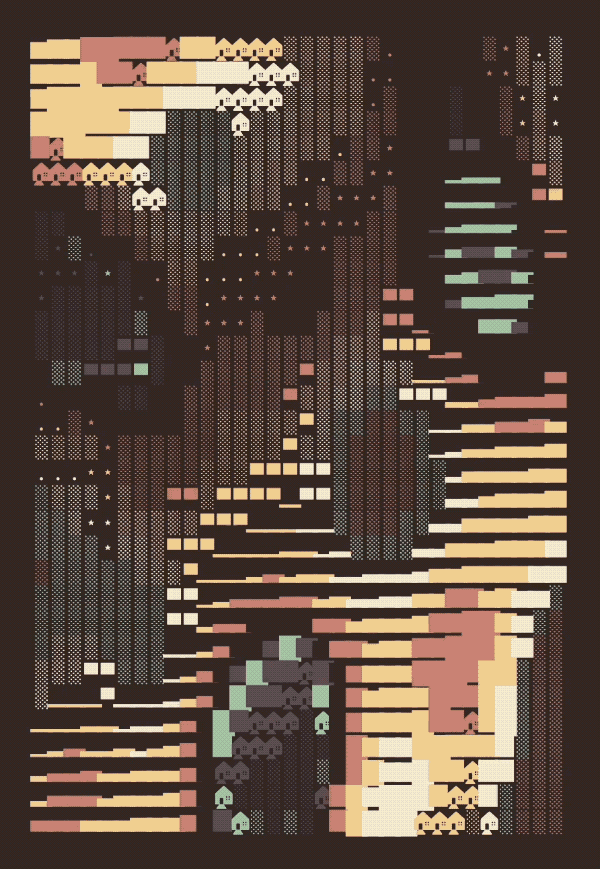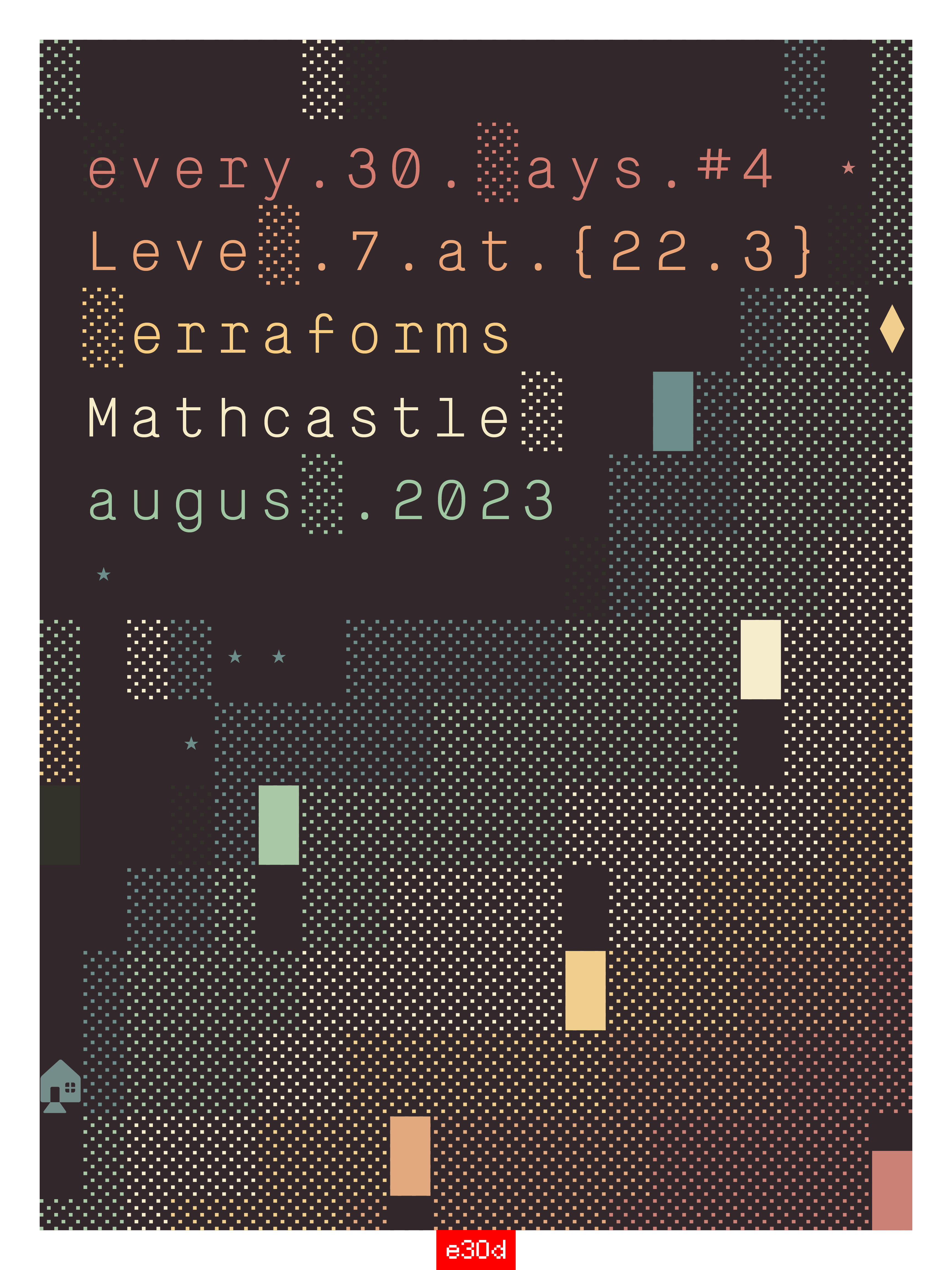Terraforms, a digital art collection by the anonymous coding duo Mathcastles, was a radical rejection of the status quo when it launched on the Ethereum blockchain in December 2021. The work finds positive meaning through a series of rejections:
- that blockchains are merely a storage device for finished work.
- that digital art objects should be complete upon collection.
- that visual aesthetics are the primary criterion for art.
On this final point, one of the earliest and most radical proponents of this idea was early 20th-century artist Marcel Duchamp. He presented ordinary objects as art and issued imaginative cheques and bonds as his works. These pieces reinforced his view that art could exist beyond traditional skill or craftsmanship by presenting ordinary, everyday objects within a new context.
In line with this, Duchamp rejected the art of most of his peers as “retinal”, art which only appeals to the immediate visual satisfaction. Duchamp’s views challenged prevailing notions that art was first and foremost about visual beauty.
A rejection of aesthetics as the sole criterion for art encourages the viewer to explore a work’s potential as a means of conveying ideas—in Duchamp’s case, the authenticity of art and the role of the artist. In embracing such a “conceptual” approach, artists often explore unconventional materials and methods to create work that goes beyond the surface to engage the mind of the viewer, and to challenge audiences to seek deeper meaning and interpretations within a work.
Today, Terraforms emerges as a category-defying work which carries Duchamp’s outlook into the realm of digital art on the blockchain.
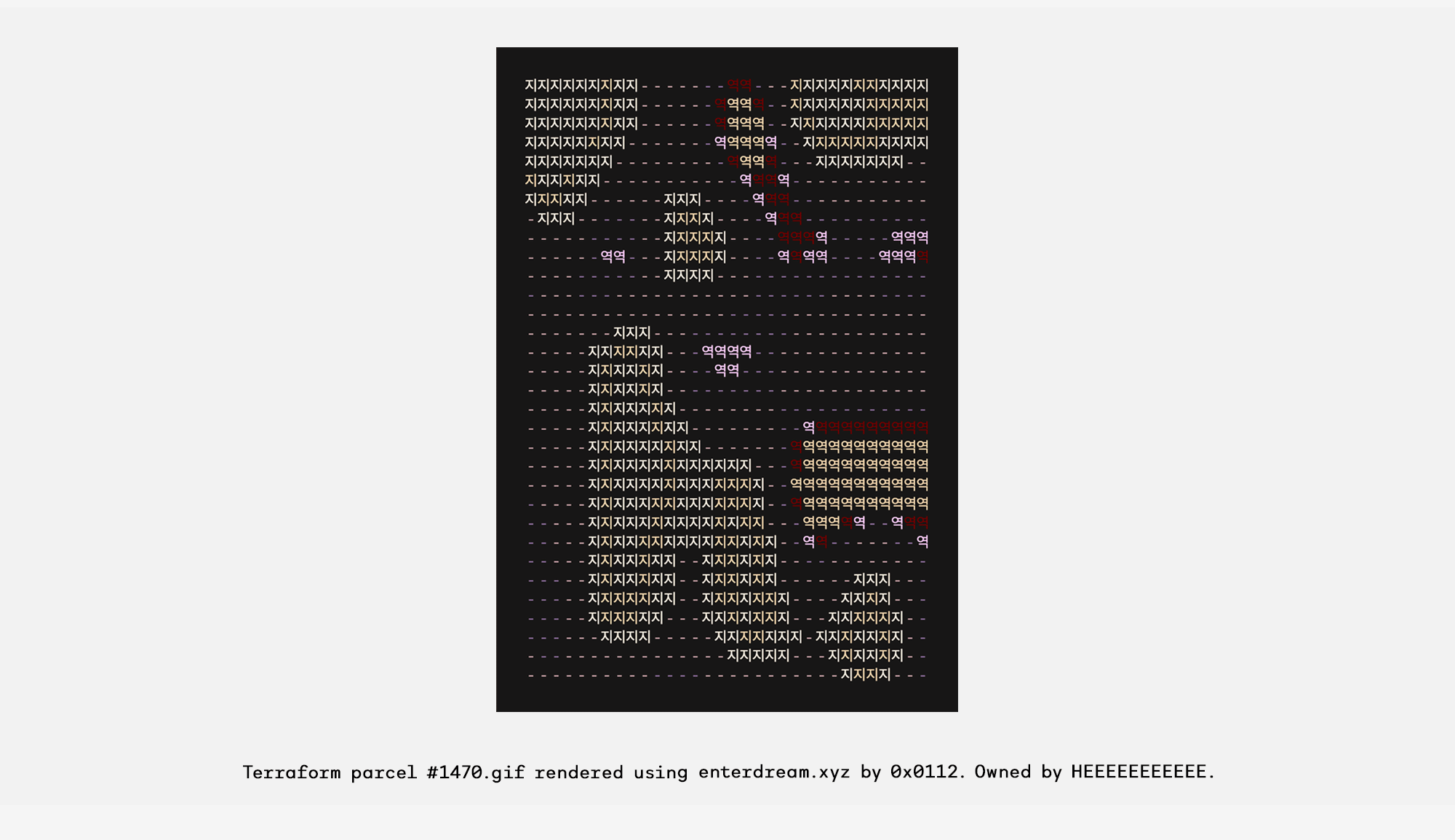
Artistic innovation challenges the categories previously employed and relied upon. In effect, the process of categorization, let alone comprehension, trails behind the difference brought about by innovation.
To understand the challenges involved in categorizing the Terraforms project, look no further than the struggle faced by one of the project’s artists – 113 – to describe it within the clean lines of pre-existing concepts. In a recent tweet, 113 speculates about the right classification for Terraforms: “World Computer Art, Art World Computer, Art Worlds Online, World Computer, Runtime Object Artwork.”
At glitch Gallery, we aim to think about the project as an exploration of three essential concepts:
(1) World
(2) Computer
(3) Art
World
Terraforms is represented by 11,104 objects, each arranged in a 32x32 grid of unicode characters. Aesthetically striking, these individual works are merely the outward-facing facade of the Terraforms system.
Each grid within the architecture of Terraforms is characterized by several traits, providing an initial glimpse into the wider structural design. The architecture is composed of 75 distinct ‘Zones,’ each associated with a unique color palette, and 92 ‘Biomes,’ prescribing the set of glyphs used in the grids for the animation. The ‘Chroma’ property sets the pace of the animation, akin to a heartbeat pulsating at varying speeds throughout different elements of the structure.
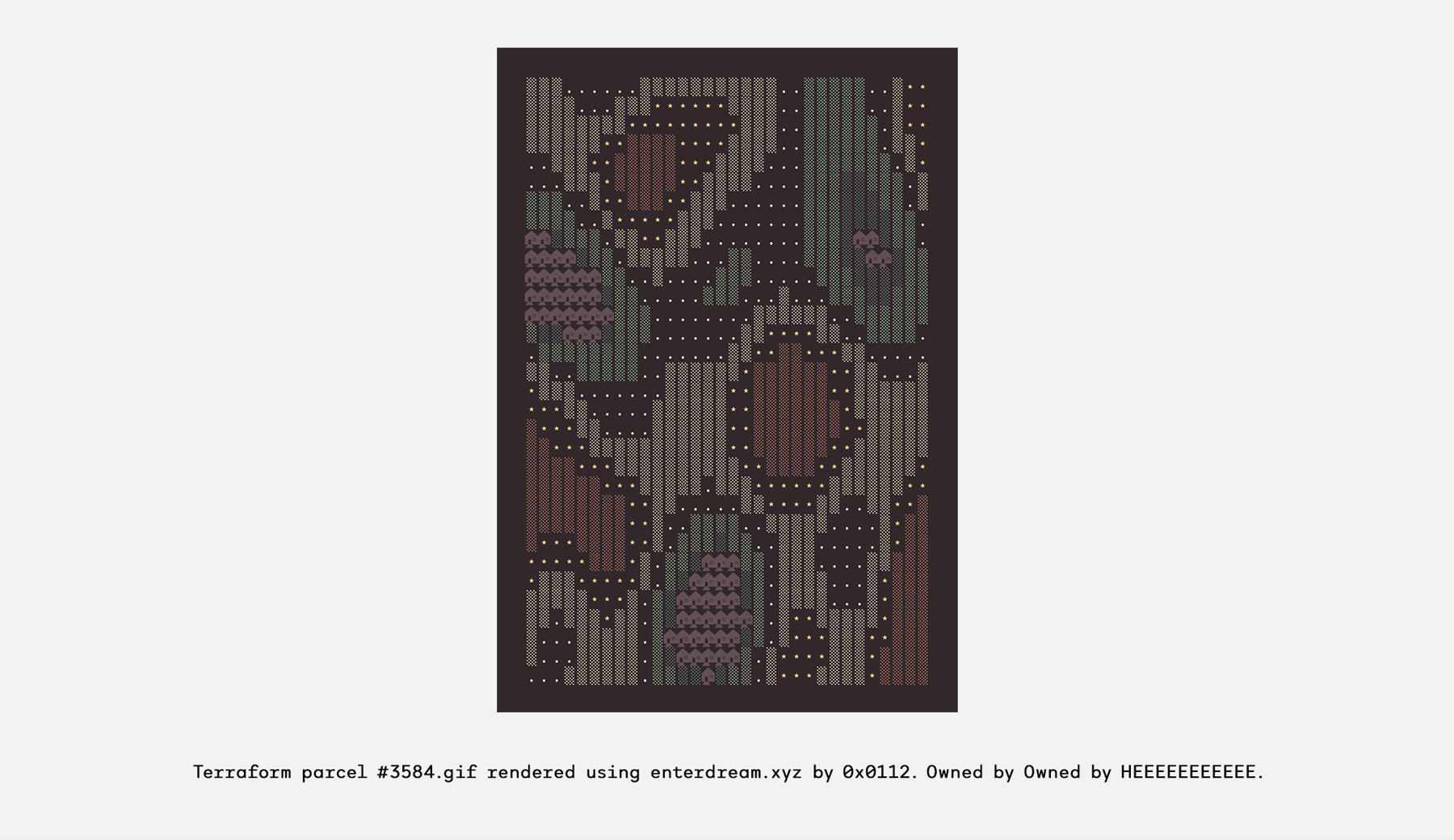
The individual objects, also referred to as “parcels” within the Terraforms ecosystem, essentially serve as components of an overarching “Hypercastle” architecture. Each work’s title and metadata specifies its position within the greater structure, placing it along the x and y axis, and on the twenty-level structure.
Furthermore, each parcel is characterized by a unique topography or heightmap, which is not immediately visible but can be accessed from the contract using the “tokenTerrain” query. This topography introduces another temporal dimension, given that the height of various elements fluctuates over time.
Collectively, the 11,104 parcels constitute the overall architecture, which assumes a diamond-like shape with varied numbers of parcels across its structure. The rhombic structure is apparent in its distribution of parcels: level 1 features 13 parcels, level 13 contains 2,075 parcels, while level 20 again holds 13 parcels. Each level can be perceived as a floating terrain, each portraying a unique virtual landscape defined by its zones and biomes.
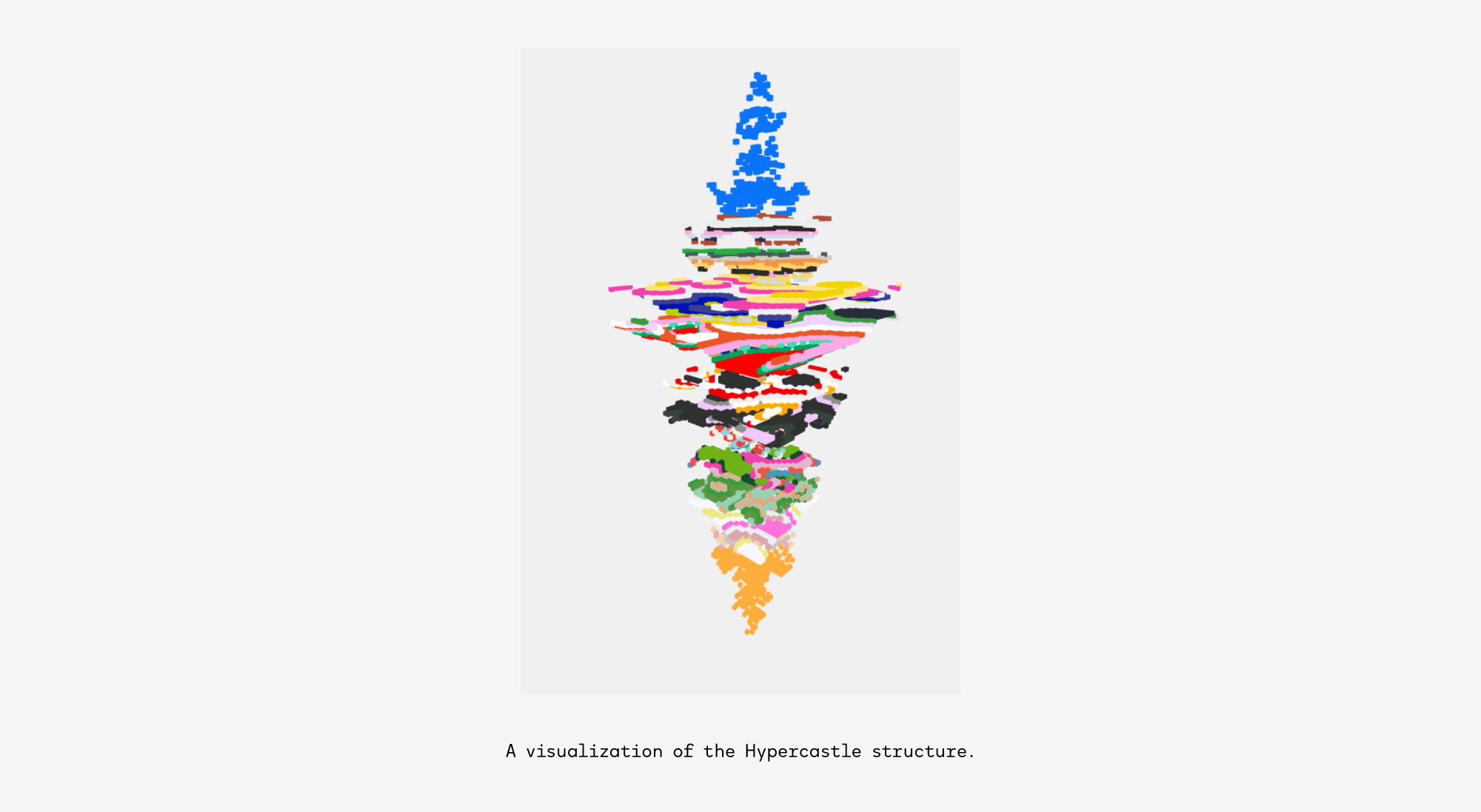
One of the often-overlooked aspects of Terraforms is its organic undercurrent. The ‘Chroma’ rhythm, akin to a pulsating heartbeat, permeates the structure. The evolving topography within each parcel parallels the shifts within a landscape over time. And, most notably, Terraforms possesses an in-built entropy: over the course of the next 10,000 years, the structure will gradually unwind and decay.
Dynamic generative artworks are autonomous systems that can truly “live” on decentralized blockchains.
Alongside artists Deafbeef (Entropy)1 and Casey Reas (Century 2052), Terraforms is one of the pioneering projects to exist, evolve, and ultimately perish on the blockchain. However, the Terraforms world operates on a scale more akin to geological than human time, detaching the temporal aspect from any value consideration.
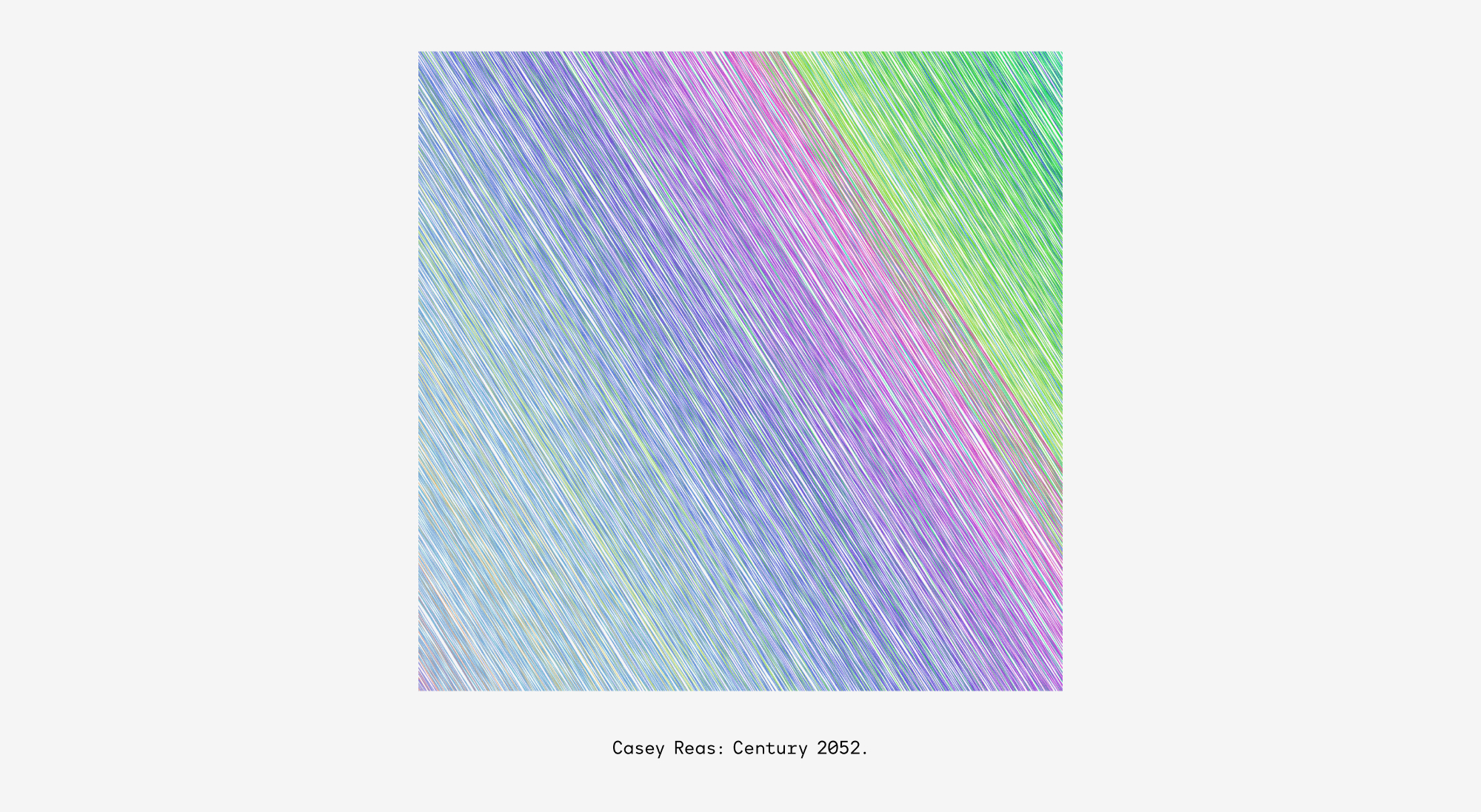
In its role as a virtual world creator or a form of 3D land art, Terraforms shows a deep affinity with avant-garde architectural projects, specifically, Constant’s “New Babylon.”
Over a span of 20 years, the Dutch architect endeavored to design an utopian city envisaged as a dynamic network. Constant aimed to construct a macro-structure that could be continually transformed and reinterpreted by its inhabitants. In this context, “Art” ceases to be a static, self-enclosed object. Instead, it transforms into the dynamic interaction between a visionary structure and the actions of those who inhabit and engage with it.2
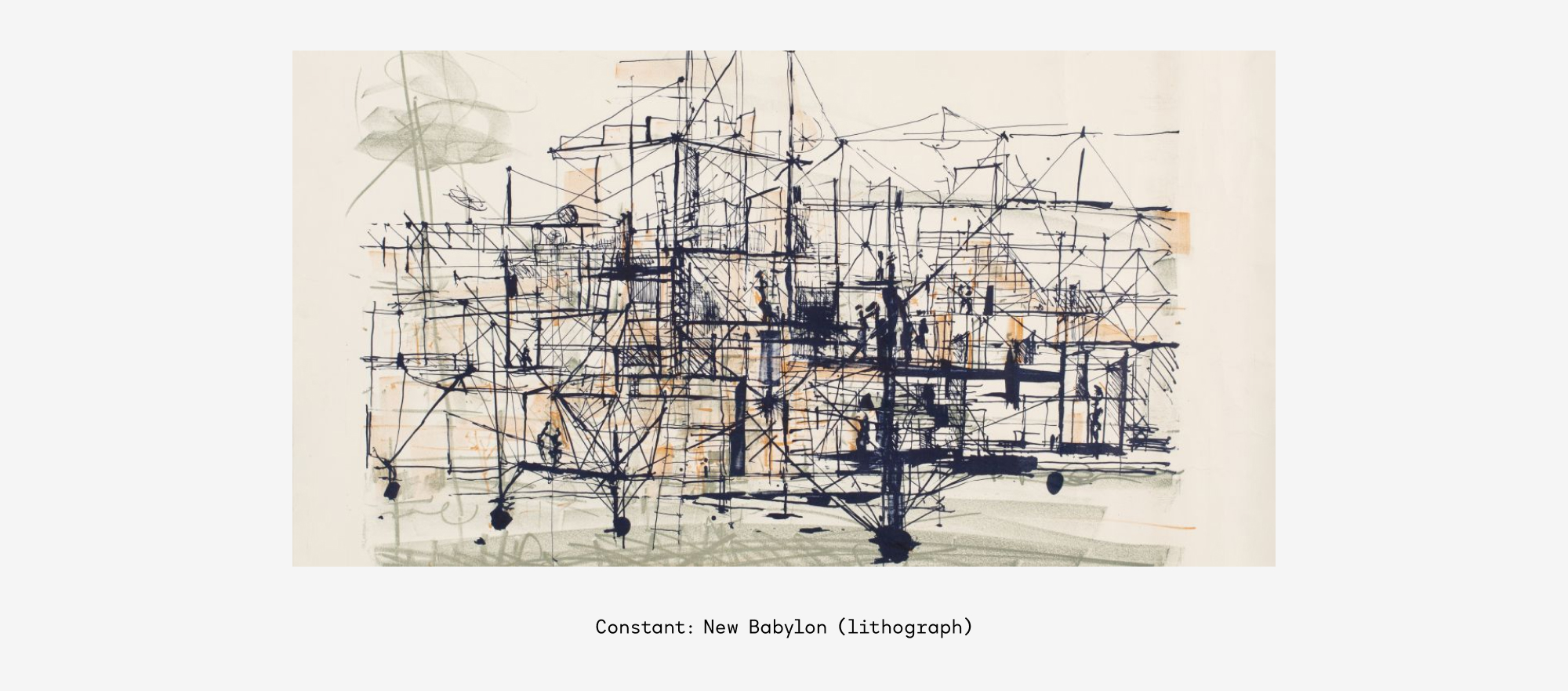
New Babylon was both a visionary Gesamtkunstwerk and a tangible technical proposal. Despite Constant’s optimistic expectations that robotics and automation could actualize the plan, it ultimately remained an unfulfilled vision only imagined through a myriad of models, drafts, and sketches, yet never realized as a built structure.
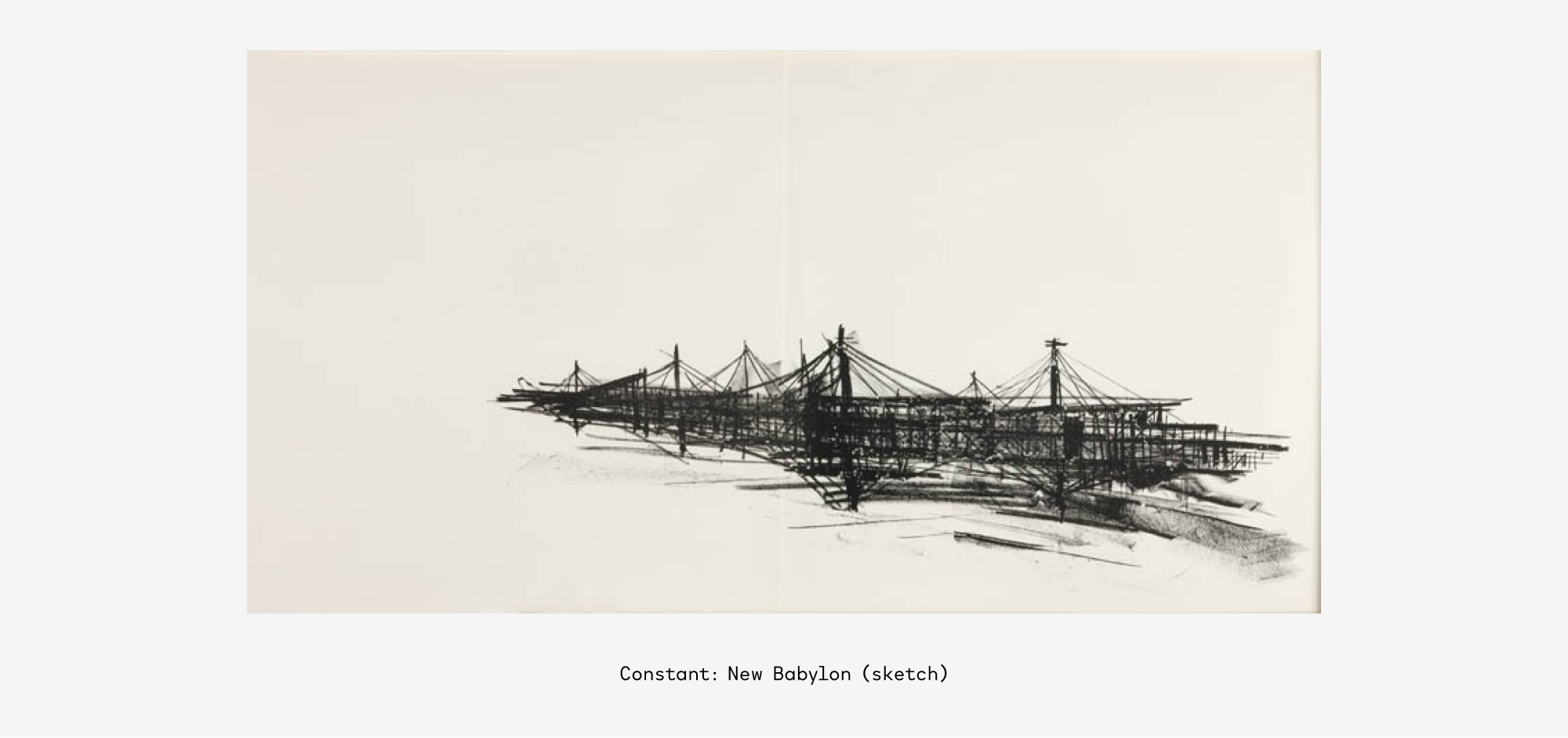
Similar to “New Babylon,” Terraforms is an abstract macro-structure that can only be interpreted and completed by its community. Mathcastles could have supplied the necessary tools to visualize the entire Terraforms architecture or given a final interpretation of all features.
Instead, they decided to leave it to the community to use the project’s on-chain data to interpret and visualize the Hypercastle. As 113 notes: “The 3D structure of Terraforms is non-visual. It’s not rendered. It has no definitive visual presentation. It’s an abstract reinterpretable skeleton.” 3 Thus, community members like Matto and 0x0112 have developed tools to visually interpret the architecture. And there are also impressive community activities focused on deciphering some of the references buried in the Zones.
When asked about the role the community plays in the project, Matto notes:
“Terraforms gestures towards a world where meaningful computing and software literacy becomes widespread and people engaging with computers transcend the role of ‘user’ to become something more like a ‘digital citizen’ an empowered participant in a system. This is exemplified in the Mathcastles studio’s engagement with the community of collectors and enthusiasts around the project. By intentionally leaving some facets of the piece absent they create a negative space to be filled by creators like myself in creating the Hypercastle Explorer application and Unity SDK, El Ranye in creating the Terraforms Explorer website and 0x112 who created http://enterdream.xyz (among many other great contributors). This spirit of decentralized creation, of networked art and tool making has helped to foster a tight knit community around it while also allowing the work to be understood and experienced through a variety of views, expanding the ways in which it can be approached and appreciated.”4
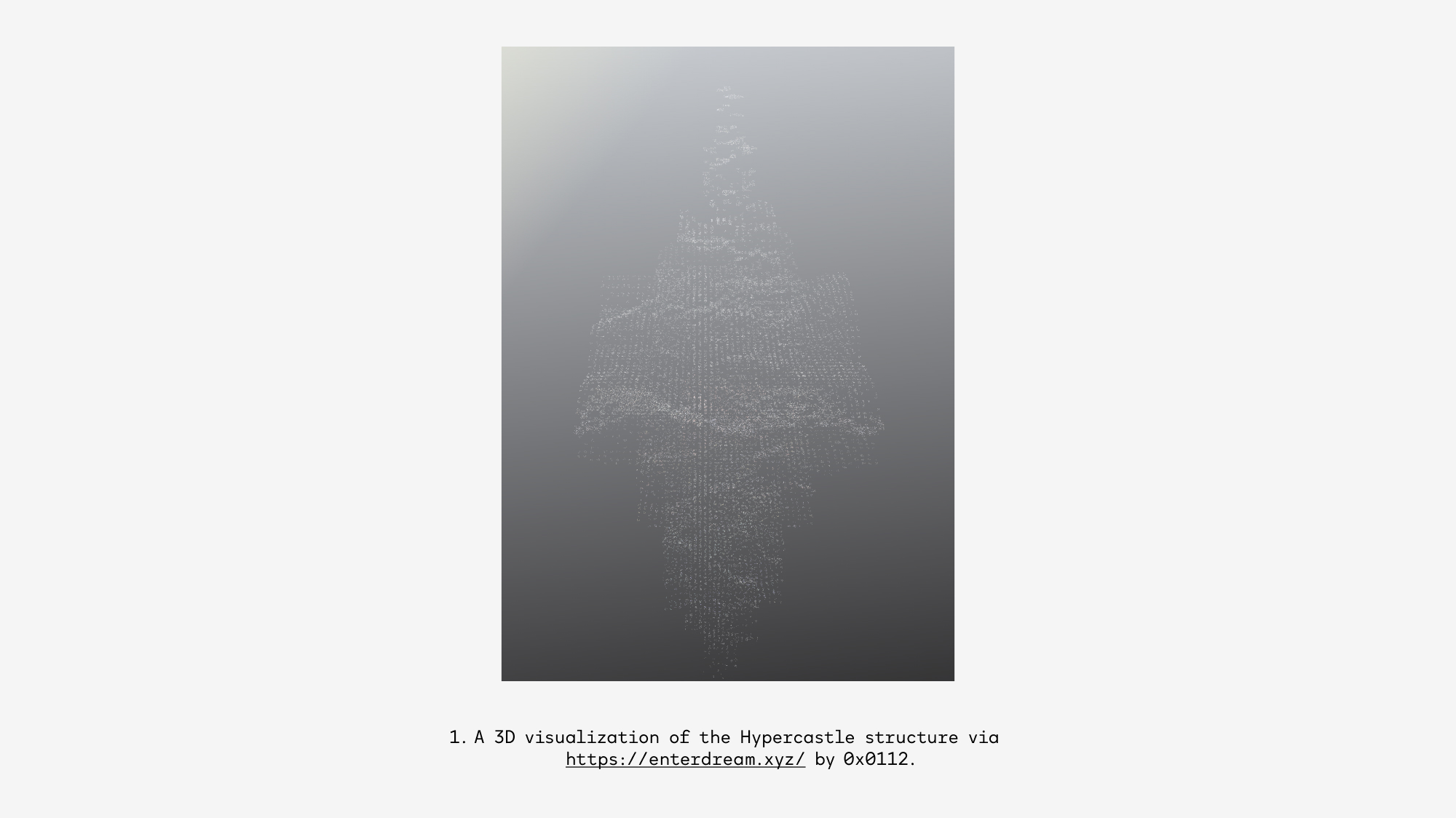
Essentially, Terraform’s architecture guides the viewer from the perceptible – the 2D parcel – to the imperceptible – the true architecture of Terraforms, which is art manifested through computation.
Computation
Terraforms engages with computation as an artform, specifically utilizing Ethereum, the decentralized and permissionless world computer, as a medium in its own right.
Code and computation are fundamentally non-visual. They operate within a broadly conceptual framework based on instructions and calculations. When 113 insists that Terraforms’ essence lies beyond the visual, they point to the idea that the project’s depth is understood primarily through its technical infrastructure. Code and computation are not merely a means to an end here, but the thing itself.
Let it be said plainly:
Terraforms isn’t just another project with vague language about the “intersection of art and technology.” Rather, it is the attempt to artistically “utilize” smart contracts in the most ambitious manner, enabling the creation of something that is irreplaceable in any other form. This encapsulates the real meaning of engaging with computation as a medium.
Written by xaltgeist, the second anonymous coder behind Mathcastles, the project’s smart contract has been celebrated for its elegance and complexity.5 It is organized through several components. The primitive raw data for constructing the grids in Terraforms is stored in two distinct contracts, one housing Unicode glyphs for biomes and the other holding hex color codes for zones.
Furthermore, there is a separate contract that determines the overall architecture of Terraforms and, finally, there is a Perlin noise library that adds a “natural feel to the animation, topography, and layout,” as the developer and artist Michael puts it.
The Terraforms contract employs all of these components to generate the animation at “runtime.” In computer science, “runtime” refers to the period during which code is being executed as machine code on a computer’s CPU—the operational phase in the “lifecycle” of a program.
By analogy, runtime art in cryptoart is defined as a form of dynamically computed art at the smart contract level, running as long as the Ethereum blockchain is running. Hence the lifecycle of the artwork is identical to the lifespan of Etherum, which we consider to be unrestricted.
HEEEEEEEEEEE, collector of this exhibitions object, writes:
“In a time where artists have been sold provenance and (often circumventable) royalties as the ultimate justifications for NFTs and blockchain, Mathcastles gestures toward a future that embraces the unique affordances of distributed computing as an artistic medium for its own sake, rather than as utilitarian feature extension of existing digital art.
The extent to which Terraforms, a gateway drug by admission, fully delivers on this promise is subject to interpretation, but I am extremely confident that future efforts by the studio will actualize these ambitions for artists, collectors, and skeptics alike.”
Various approaches are available for the Terraforms community to interact with, build on top of, and contribute to the development of Terraforms. One aspect already discussed is the community-led interpretation and visualization of the Hypercastle.
Owners of each digital Terraforms object can also opt to transition their parcel from the initial “Terrain” mode to the “Daydream” mode. Here, they can inscribe their own drawing onto the parcel, and save it on-chain by moving into the “Terraform” mode. While the shift from Terrain to Daydream mode is irreversible, the transition from Daydream to Terraform mode can occur indefinitely, facilitating continuous modifications and perpetual overwriting of each parcel.
Lastly, the Terraforms smart contract is designed to enable developers to construct software atop the existing structure, or alternatively, utilize a different seed value to create variant versions.
Terraforms embodies an artistic use of Ethereum smart contracts as a permissionless, unmediated, and interoperable form of computation. It stands as one of the most demanding examples of utilizing this technology’s full potential as an artistic medium.
Art
In a recent tweet, 113 made the following observation about Terraforms: “The visuals are almost a trojan horse. Package design. A 2021 legibility costume.”6
We are now in a better position to understand the reasons behind this claim. Terraforms is an intentionally abstract and indeterminate project that purposefully avoids visualizing or depicting the virtual world it enables. Instead, it focuses on providing the underlying infrastructure of the “invisible” Hypercastle on the smart contract level, establishing the conditions that make this virtual world possible.
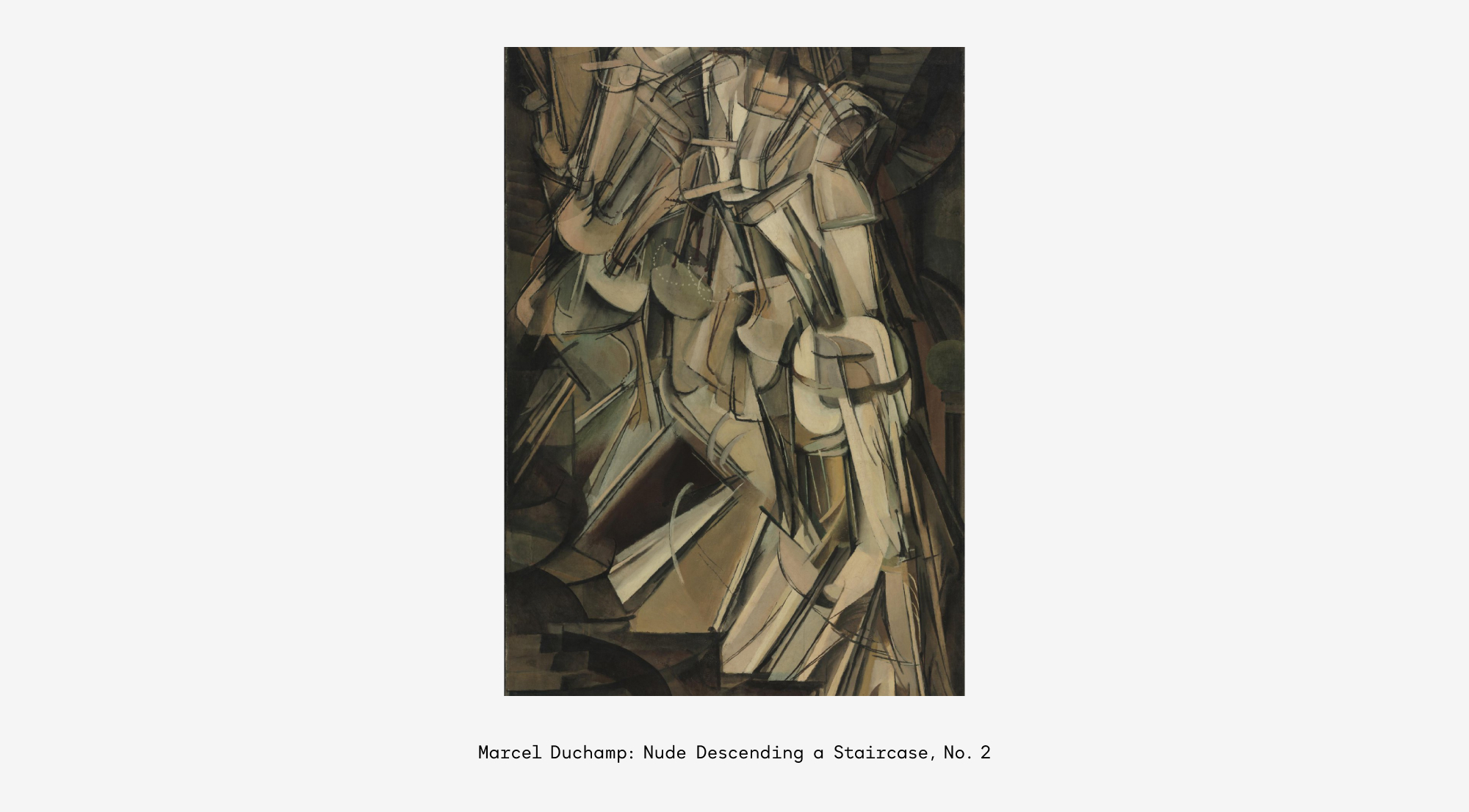
Decades ago, Duchamp, stated: “Painting should not be only retinal or visual; it should have to do with the gray matter of our understanding, not alone the purely visual.” 7
Today, Terraforms proposes the same for digital art on the blockchain. According to the project’s philosophy, the most advanced form of digital art ought to transcend aesthetics and engage with the possibilities of the medium in a deeper way.
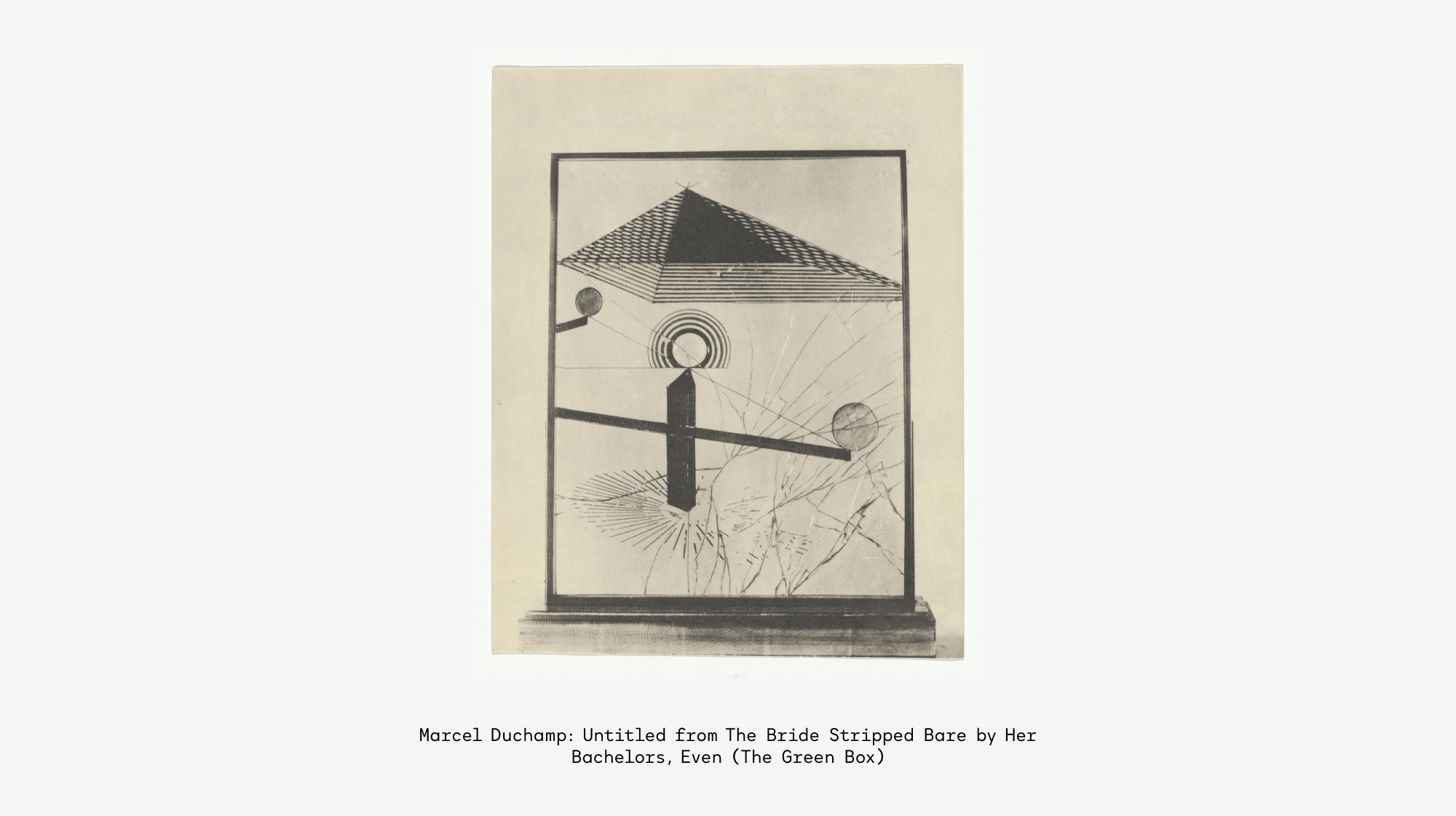
Positioning themselves, be it intentional or inadvertently, within a lineage that stretches from Raymond Roussel to Marcel Duchamp and Constant, Mathcastles aligns with an artistic perspective that embraces a conceptual understanding of art and celebrates the imaginative worlds opened by the mind. As Kevin Buist nicely puts it, “Terraforms is a reminder that the best virtual worlds are imagined, not simulated.”8
To a certain extent, this artistic understanding explicitly articulates what is implicitly present in every form of art and recognized by anyone who has experienced meaningful encounters with art: significant works of art transcend mere aesthetic pleasure. While they may possess striking beauty (and many Terraforms parcels are among the most beautiful works of character-based art today), their true significance extends beyond immediate visual enjoyment. They possess a profound “depth” and inherent indeterminacy that invites endless interpretations.
This rigorous demand placed on art is born from a genuine respect for it. If one does not take art seriously as a form of independent thinking, there would be no reason to impose such demands. The very essence of setting these standards is rooted in a profound recognition of art’s significance.
Reading through 113’s tweets, it is therefore no surprise that one finds a clear ambition for Terraforms:
-
Inscribing itself in the lineage of Larva Labs and Art Blocks as a defining project of generative art on the blockchain
-
Fundamentally changing the very category of the digital artwork, as it is understood by the crypto scene as well as the contemporary art world, by using the full potential of decentralized, permissionless computation as a medium
-
Transforming the crypto space into the primary context for digital art and revealing the superficiality of much contemporary digital art that only vaguely references digitization.
In previous articles, we have described the genesis of unique digital objects and arrival of generative art on the blockchain.
With Terraforms, we see digital objects morph into something different as the very idea of digital art is redefined through the project. Seen as a whole, Terraforms is an open, living work in which art provides the base layer for a virtual world.
Each digital object in this macro-structure becomes a kind of indeterminate element with entirely new functions: running live on the Ethereum virtual machine, endlessly evolving, inherently interoperable, radically networked, and indefinitely open to reinterpretation by the community.
In the early 20th century, Duchamp aimed to demonstrate that the essence of artwork is not visual but conceptual. Mathcastles’ Terraforms is an open-ended experiment that invites a community to collectively define the significance of digital art on the blockchain beyond aesthetics.
We believe the impact may be comparable.
-
https://deafbeef.com/series/3 ↩
-
Constant insisted that only the inhabitants themselves could complete the work: “New Babylon is the work of the New Babylonians alone, the product of their culture.” Constant “New Babylon” (1974), https://www.readingdesign.org/new-babylon ↩
-
Quote from 113 in “Five Views of the Metaverse,” https://outland.art/five-views-of-the-metaverse ↩
-
Matto, private message to the author. ↩
-
The best overview of the technical side of Terraforms can be found in Michael’s “An Ode to Terraforms,” https://ilikecalculus.substack.com/p/an-ode-to-terraforms. The technical summary is based on this article. ↩
-
From “A Conversation with Marcel Duchamp and James Johnson Sweeney,” ed. and intro by James Nelson (New York: W.W. Norton & Company Inc., 1958), p. 97. ↩
-
Kevin Buist, “The Map is the Territory,” https://outland.art/terraforms-by-mathcastles/ ↩
